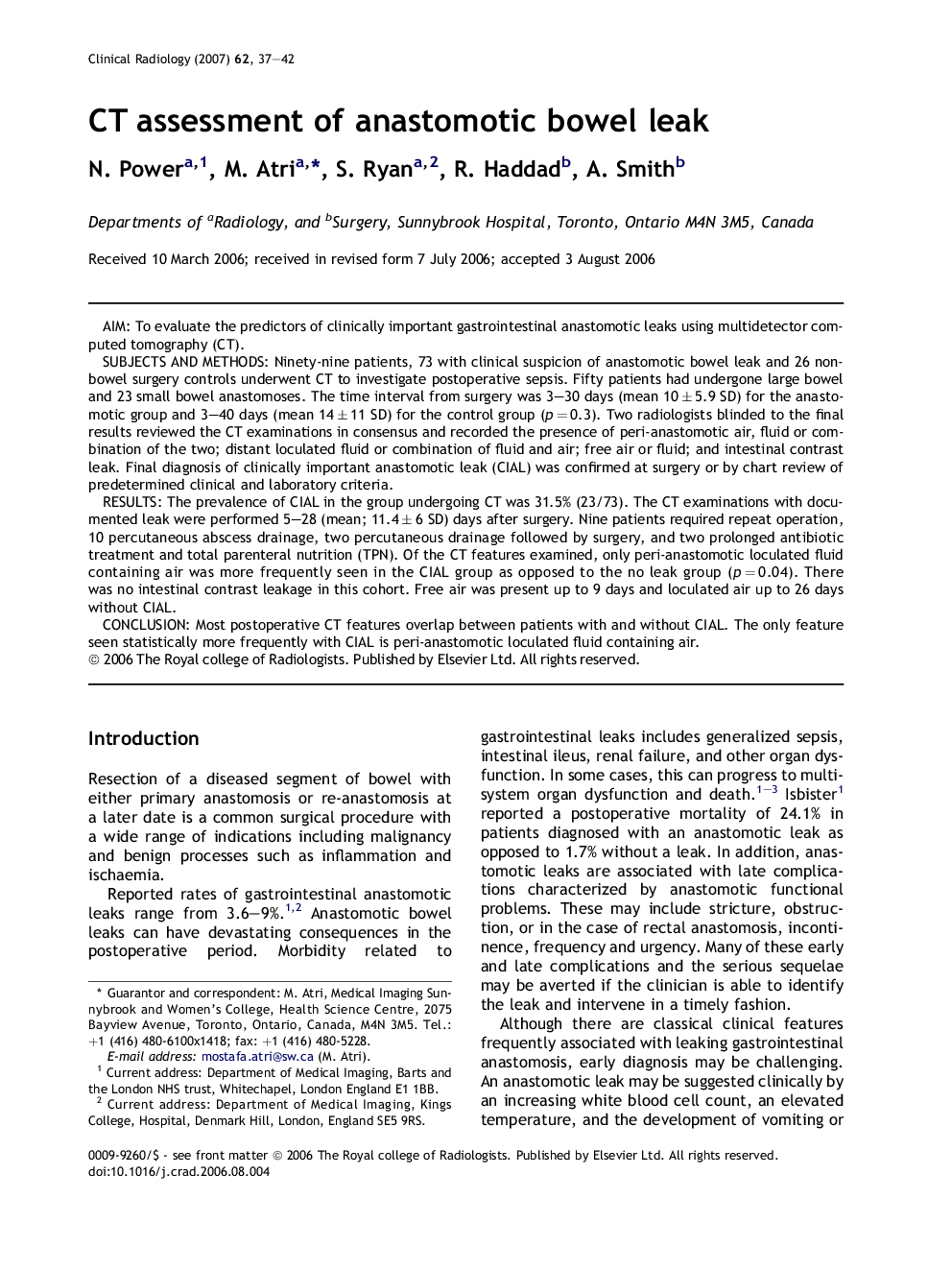| Article ID | Journal | Published Year | Pages | File Type |
|---|---|---|---|---|
| 3983753 | Clinical Radiology | 2007 | 6 Pages |
AimTo evaluate the predictors of clinically important gastrointestinal anastomotic leaks using multidetector computed tomography (CT).Subjects and methodsNinety-nine patients, 73 with clinical suspicion of anastomotic bowel leak and 26 non-bowel surgery controls underwent CT to investigate postoperative sepsis. Fifty patients had undergone large bowel and 23 small bowel anastomoses. The time interval from surgery was 3–30 days (mean 10 ± 5.9 SD) for the anastomotic group and 3–40 days (mean 14 ± 11 SD) for the control group (p = 0.3). Two radiologists blinded to the final results reviewed the CT examinations in consensus and recorded the presence of peri-anastomotic air, fluid or combination of the two; distant loculated fluid or combination of fluid and air; free air or fluid; and intestinal contrast leak. Final diagnosis of clinically important anastomotic leak (CIAL) was confirmed at surgery or by chart review of predetermined clinical and laboratory criteria.ResultsThe prevalence of CIAL in the group undergoing CT was 31.5% (23/73). The CT examinations with documented leak were performed 5–28 (mean; 11.4 ± 6 SD) days after surgery. Nine patients required repeat operation, 10 percutaneous abscess drainage, two percutaneous drainage followed by surgery, and two prolonged antibiotic treatment and total parenteral nutrition (TPN). Of the CT features examined, only peri-anastomotic loculated fluid containing air was more frequently seen in the CIAL group as opposed to the no leak group (p = 0.04). There was no intestinal contrast leakage in this cohort. Free air was present up to 9 days and loculated air up to 26 days without CIAL.ConclusionMost postoperative CT features overlap between patients with and without CIAL. The only feature seen statistically more frequently with CIAL is peri-anastomotic loculated fluid containing air.
